
views
Pinpointing Why Your Horse Bucks
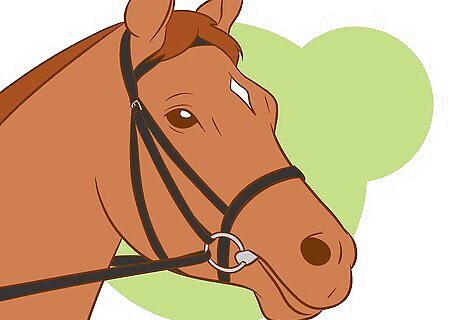
Check all tack and equipment. Check your horse for signs of discomfort such as a hollow back, pinned ears, or a sallow expression. He could be in physical pain, bucking to get rid of it. After all, horses buck for a reason. Make sure all equipment you use actually fits your horse properly. A poor fitted saddle will not only cause back pain and scarring but it can also lead to physiological fear of being ridden which can make handling and catching much harder. If you want to accustom a horse to the halter, take it with you but do not put it on for the first few times. You could start with a grooming halter that does not have all the buckles and things that would make a horse feel restricted. Give them a treat after putting on the halter. Take off the halter slowly. Anything that moves quickly behind their eyes or head can make them react badly. Get a specialist to check your saddle fits correctly get your horse's back/spine checked out too. once these two have been checked look at the bridle and the bit. If all these potential problems have been checked out then the next thing to consider is you.
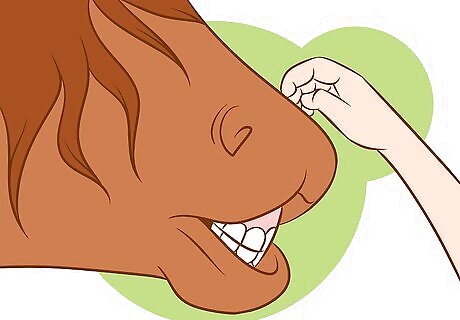
Tune into how your horse is feeling. You need to figure out what the problem is. Is the horse getting enough exercise? Are you sure that he is not in any pain? Try watching his ears. If his ears are forward, he might just be having a good time and getting some of his energy out. If his ears are pinned back against his head, he may either be upset or somehow in distress. Sometimes horses buck or act up in order to tell you something. It's important to listen to your horse because a lot of the time he's just trying to tell you something is wrong. Another reason may be because he just has a bunch of pent-up energy – even the best horse can buck if it has lots of energy to let out. In this scenario, lunge or free lunge your horse till it gets its wiggles out. Lunging before a ride can also help. He might get his frustration and energy out before you get on and you two can have a peaceful ride. Also, thread the lunge lines through the stirrups and drive the horse around to get it used to the pressures of reins and learning what is expected of it.
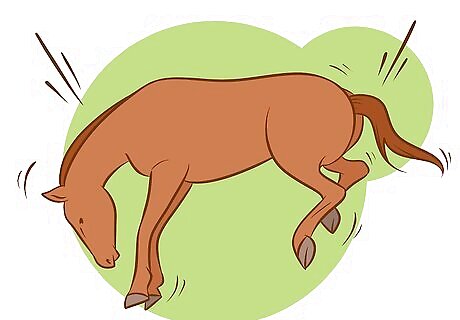
Try to notice if there is any correlation between any outside factors and when your horse bucks. If he got spooked near a certain rail one time, he may buck every time he goes past it. Do some lead line work and try to calm him down about it. If he gets ornery when doing certain drills, try to limit how long you spend on those drills or give him a lot of positive encouragement when he does well. Then go through some drills or activities he enjoys. Don't push him to do frustrating activities for too long – gradually build up how long you spend on them instead.
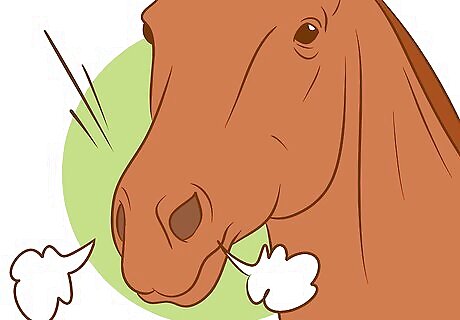
Take it slow, studying his behavior with every step. If you can't successfully sit on him without him exploding into a fit of bucks, then start out slow at a walk and build your way up. Study him and figure out when he bucks, bringing punishment and reward as needed. For example, if your horse throws a buck when you ask him to canter, express respectfully yet firmly that that was incorrect and then bring him back down to a trot. Ask again and again until he does not buck when you ask him to canter and then give him praise. Rewarding is a huge part of the training process and you must be clear to him whether or not you are pleased.
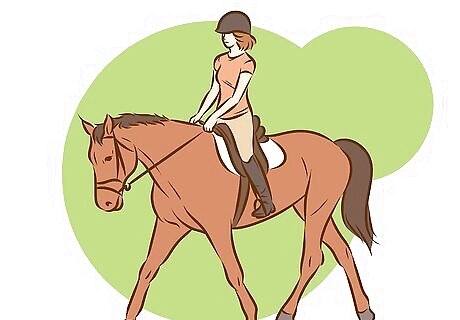
Get him retrained. Do not overlook the possibility that your horse was deliberately trained to buck. Perhaps the horse was used as a rodeo bucking horse, or perhaps a person with a grudge against a former owner taught the horse to buck as cruel revenge. You may find that much retraining is needed, or that for safety you should give up your bucking horse and get another. Horses quickly discover that bucking is a very effective method in stopping an inexperienced rider from riding them. If this problem is a reoccurring one due to lack of training, your horse probably doesn't respect you. In these cases, it is best to send your horse for re-training and get some lessons yourself or consider getting a different horse as the current one may be too much for your riding ability level. If you do decide to continue with your current horse, be aware that they may "test" you on the next ride (even if they have behaved with the trainer) so if you don't think you can handle another buck, move on.
Preventing a Buck
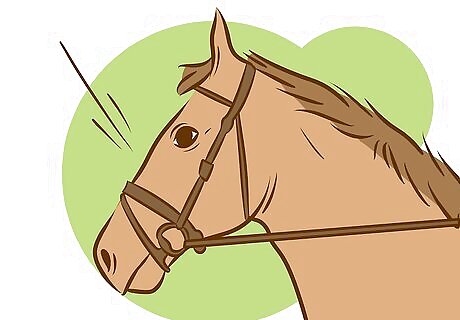
Keep his head up, neck soft and flexed. You can do this with soft half halts and making sure you always have a "live" connection between mouth and hands. Don't let him bite the bit and pull your hands and don't let your reins go slack or rest your hands on his neck. Most horses only do "pig-roots," which are a smaller version of a buck as proper bucking has the horse's head between its front legs with the back legs extended far above its rump. A horse may buck because it helps him to balance. Some ex-racehorses tend to do this when cantering in an open field or arena.
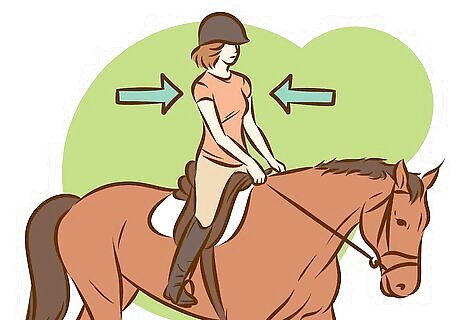
Keep your weight centered – don't hover forward. Communicate your intentions – your body weight is a really effective communication tool. Be relaxed with your weight centered over your horse. Visualize where you're going and let your head turn in the direction you're going – this will shift your weight and indicate that turn without much need for strong hand aids. You need a firm command over your horse, but not too firm. If he associates you as a rider with pain, this may be the reason he's bucking you off.
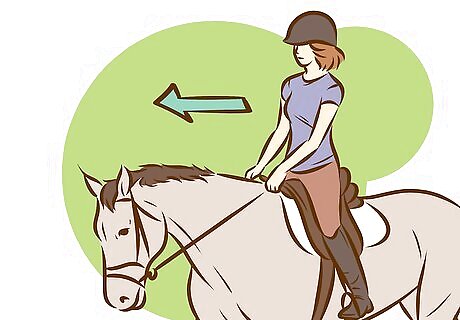
Keep forward momentum. If you hesitate your horse will know immediately and might take this as an opportunity to buck you off. Keep solid contact with lower legs and if you start to sense a buck coming, try to keep moving forward – a horse can't buck without planting his front legs. Don't let him stop. A horse might buck and then stop; the only reason he would buck was because he knew that his rider would stop him for misbehaving. Just keep going if that is the case, and he will learn that there's no reward involved.
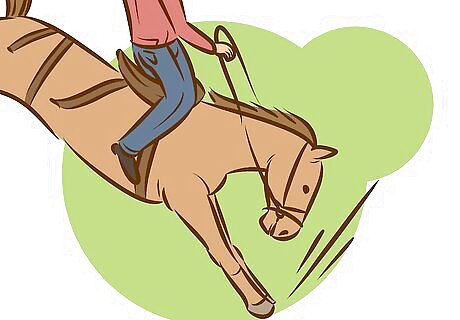
When jumping, avoid "chipping" right before a jump. If a horse is prone to bucking, they will use this as an opportunity to plant those front feet and send you flying. Make sure you practice spacing out your strides in front of a jump to get a comfortable distance for that last stride. When you get it right, keep that forward momentum! Encourage your horse with leg aids and give him ample room to stretch his neck by sliding your hands forward and letting your center of gravity move forward as well. If a horse is bucking, this means they are lifting up their back feet. This can be very dangerous for you if you are on top of the horse and it can also be dangerous for the riders around you. If another horse is bucking, try to ride yours away from it by steering away.
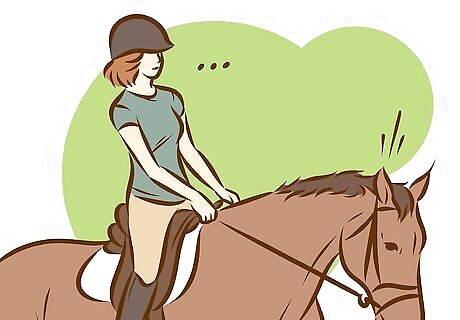
Keep your calm so you can calm your horse in turn. You must not share your fear or panic with your horse as it will pick up on it through your voice and smell. If you are on the horse at the time, then bend low on the horse, grip firmly, and keep your head to the side of its neck and away from its thrashing head. Speak as soothingly as possible while repeating its name. Don't talk to it like a baby, but as if it were a scared child. After several seconds, you can try a firm and loud (but not angry) command to try to cut through to its learned responses. It is desperately expending nervous energy, so channeling that into movement is a good idea; however, do not encourage a gallop in that state lest you want to be on a runaway train. Calming it of its fear or anger is all you can do. If you are on the ground, then keep your calm, turn slightly sideways and look downwards as to avoid its eyes. Speak soothingly and calmly. Considering it is in a panic, try smiling, yawning, sighing, or laughing. You will develop an instinct for relaxing when your horse gets out of hand.
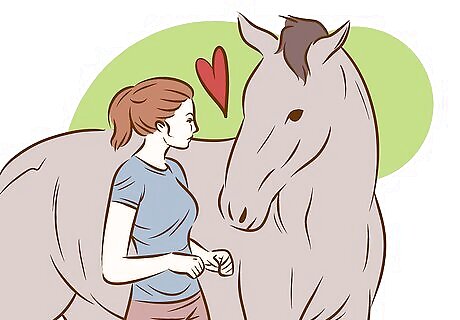
Get to know your horse. Often horses buck off inexperienced riders or riders they're not familiar with. In these cases, this will just take time. Get to know your horse and develop a relationship with him. That way when you ride him, he'll know he can trust you. One suggestion to help you and your horse gain each other's respect is to get out of the saddle and just walk. Talk and soothe him first. Have him follow you around the paddock or bring him some treats and teach him some tricks! Developing a good bond with a horse is the key to respect and a real bond doesn't come just from riding.
Handling a Horse Mid-Buck
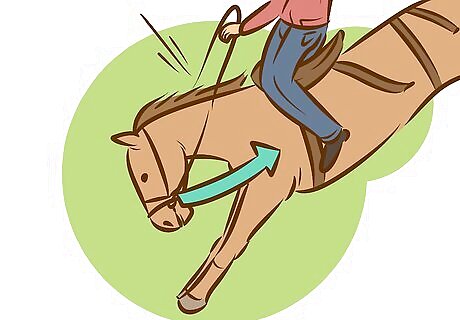
When a horse bucks, immediately disengage the horse's hindquarters. This is done by pulling your reins sharply to either the left or right, and make your horse touch its nose to your leg. A horse cannot buck when it is in this position; it can only move in an incredibly tight circle. It also reinforces you as being the herd leader and loosens the horse's muscles up so that it is easier for the horse to move. Do not release the horse until it completely stops moving, and then hold for three seconds. Repeat on the other side, just to reinforce your point to the horse. Every time the horse is about to buck, or starts bucking, repeat. If a horse is prone to bucking, do this every time you get on the horse – both standing beside the horse and once you mount.
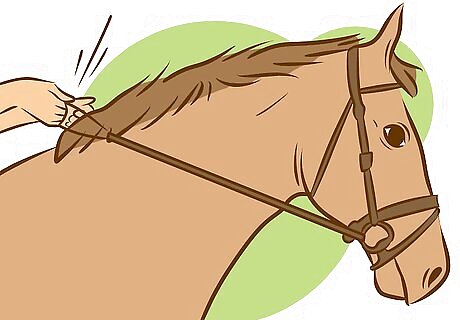
Do the "scrunch." Using one hand, gather your reins, and slide your other hand down the reins, creating a tight "scrunch" on the horse's neck. This triggers a certain vertebrate in their necking, causing them to be unable to buck. Also remember to use your legs, and the horse should back up. Once the horse has started to calm down, release the pressure of both your legs and reins. A horse cannot buck without putting its head down. Keep a tight rein so you can pull back when you feel the horse trying to lower its head, thus preventing the horse from being able to buck.

If your horse does buck, sit deep in the saddle. Keep your heels down and your shoulders back, and give strong pulls on the reins to discourage the horse from putting his head down. Remember – a horse with their head up cannot buck. Also, make sure to keep your leg on. Many times a rider will try to correct bucking by stopping the horse. It is much more correct to reinforce forward motion. Do not let the horse stop. Many times, horses will learn that bucking can get them out of work.
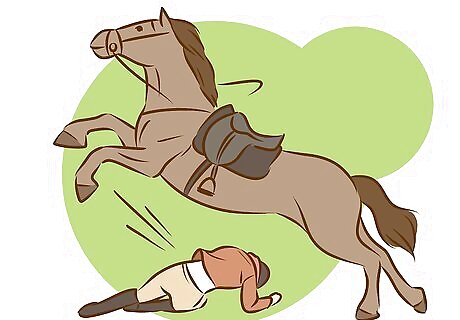
If you're uncomfortable, get off the horse, but do not run away. The first thing to do is to lean back; this will highly lessen the chances of you falling forward onto your head. However, if you are not a strong rider, you may find it easier to simply get off your horse. This may sound like a bad idea, but think about it: if you really think you are unable to stay on your horse, would you rather get off it yourself or be bucked off? The safest direction to dismount is the side. Quickly loosen your feet from the stirrups and slide off in whichever direction seems most safe. It would be a good idea to pick the side where there is not another horse nearby If there are people near you, they will probably already be trying to help the situation. If riding alone, call for help. There will most likely be at least one other human being at the stable that can help control the situation. Once you are off your horse, do not run away. This may cause your horse to think there is a danger and run with you or even at you. Walk away from your horse while still keeping an eye on it. Once it has settled down, if you are unharmed, feel free to get back on the horse. It's not always their fault and it is cruel to judge a horse on something they did once. Let him/her prove to you they are a good horse and are trustworthy after all.

If you have a close relationship with the horse, let him smell you. The first step to stopping a horse from bucking is to remove the perceived threat. The second step is to signal to the horse your scent (identity) by blowing toward the horse's nostrils. They have large olfactory glands that can distinguish many smells and use this to identify different people/animals/other horses/etc. Once the horse has this, if you are familiar to them, they will usually calm down. If they still have not calmed down, you'll just have to wait it out. Once they calm down a little, the third step is to place your hand on the upper nose of your equine friend and speak to your horse, drawing your horse's attention to you. Continue to do this pulling your horse close to you and petting your horse on the neck. After this, it's good to take your horse for a walk around so they rebuild their confidence in their surroundings and see there's nothing to worry about.



















Comments
0 comment